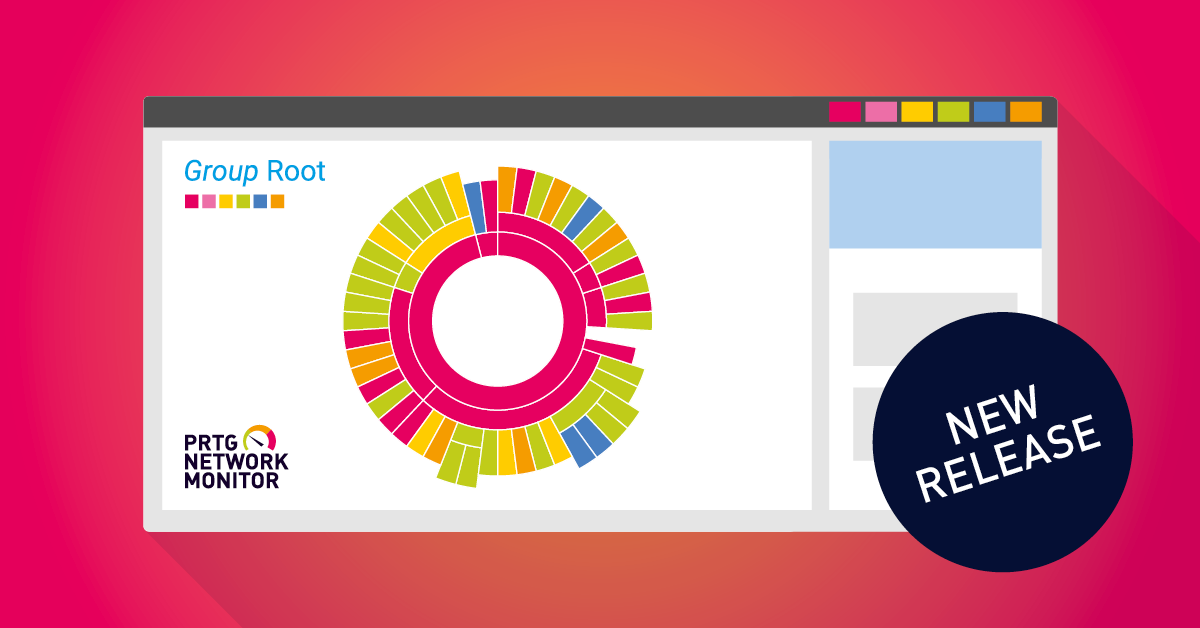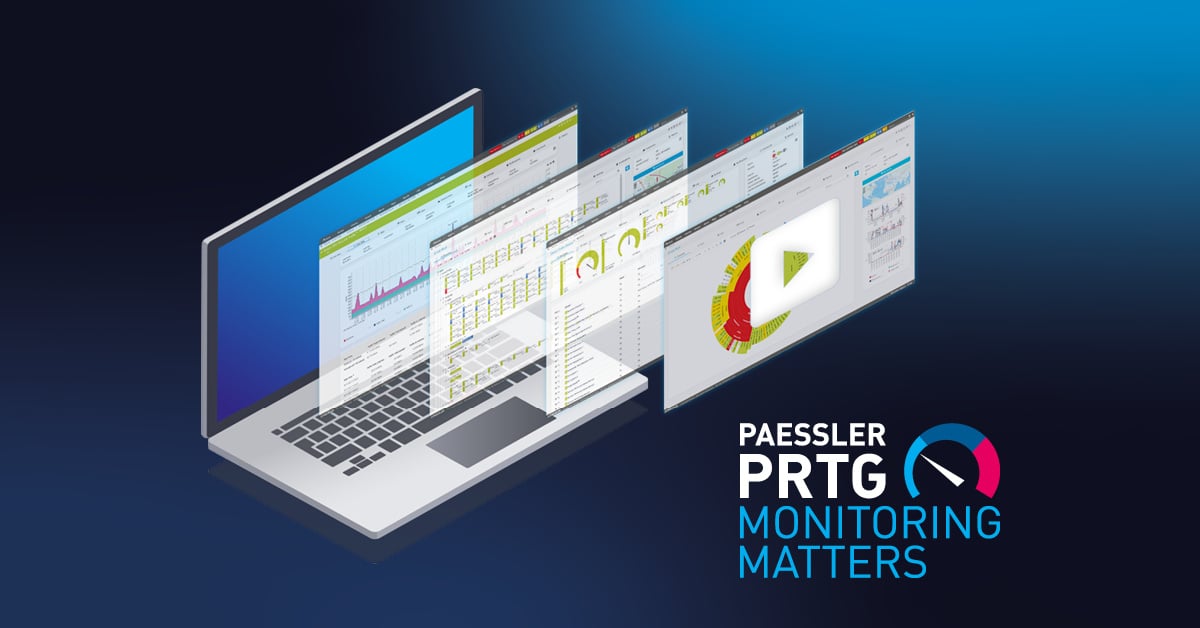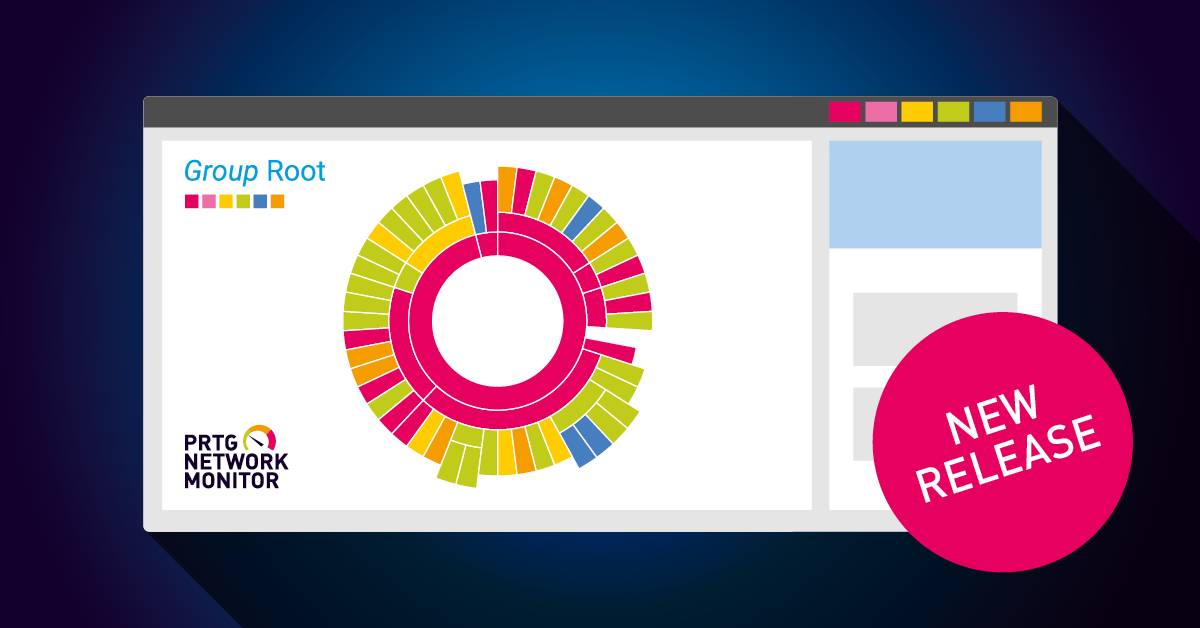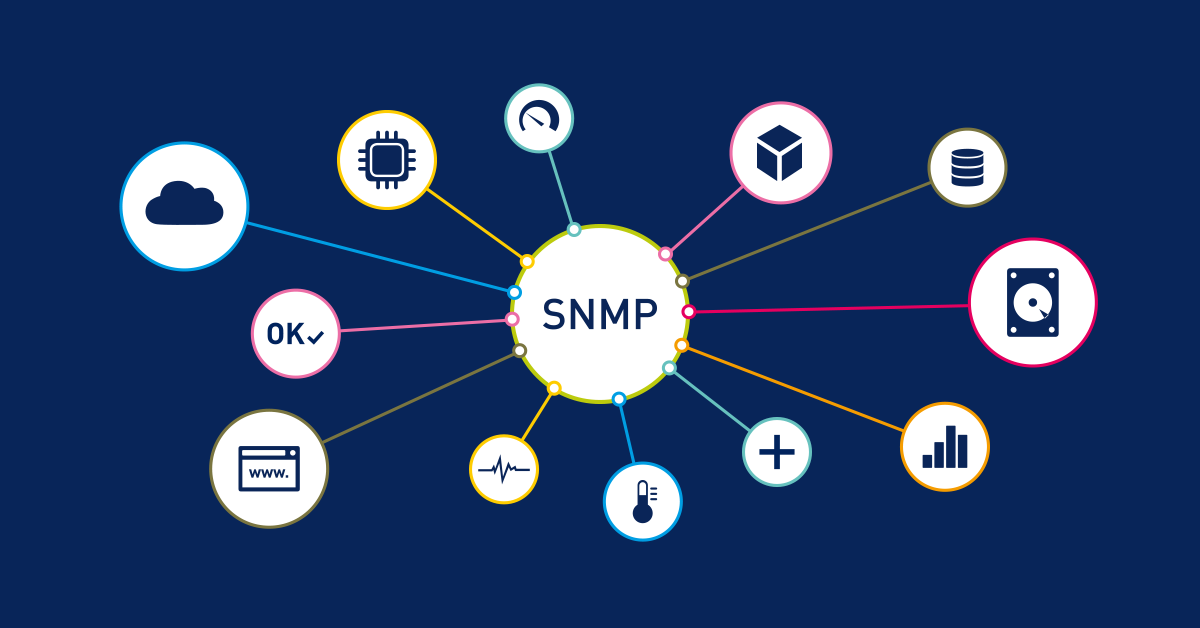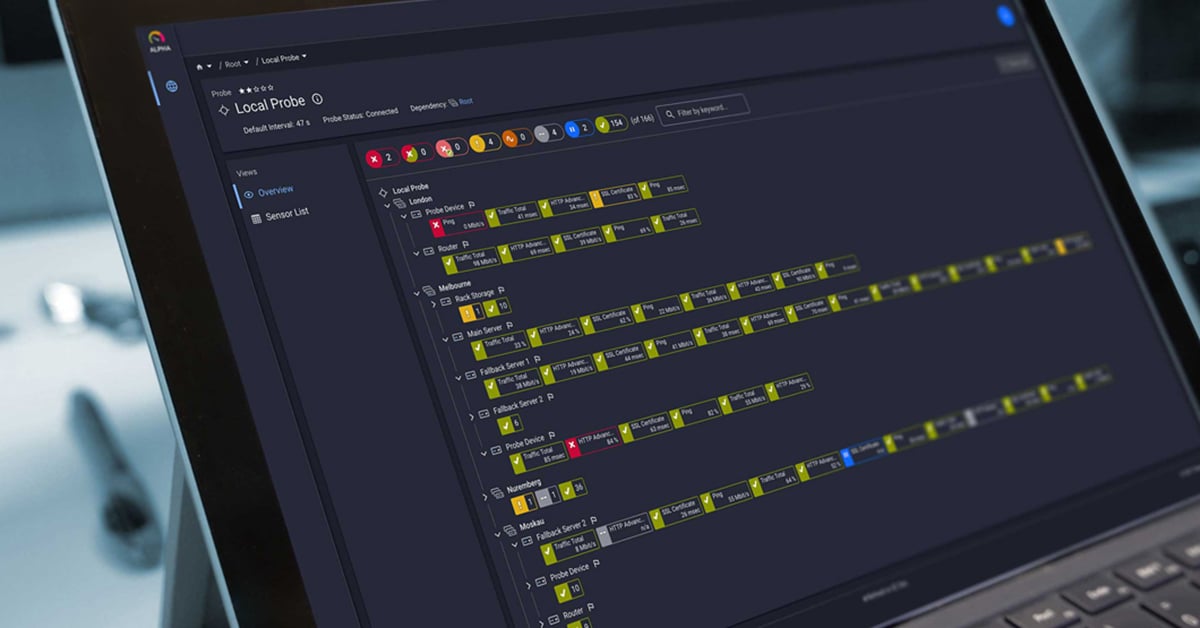This blog post is now offered as a free audio version:
The PRTG release version 19.2.50 has been available for installation in the stable channel for several days now. Maybe you already have the version in use, or you are planning the update. As regular readers already know, in these posts I give you a short overview about the most exciting new features and improvements of the current version.
New MQTT Round Trip Sensor
Many of you deal with IoT and IIoT environments on a daily basis and monitor these networks with PRTG. You've waited a long time for PRTG to assist you with MQTT. Today I am happy to introduce our first MQTT module, the MQTT Round Trip Sensor.
iMQTT stands for Message Queuing Telemetry Transport. It is a lightweight messaging protocol for use in cases where clients need a small code footprint and are connected to unreliable networks or networks with limited bandwidth resources. It is primarily used for machine-to-machine (M2M) communication or Internet of Things types of connections. Read more ...
You can now monitor the availability of an MQTT broker to ensure your IoT devices can always deliver their data. Use the MQTT Round Trip sensor to check if a connection to the broker can be established, if the broker accepts messages via publish, if the broker forwards a message to a matching subscriber, and measure either the connection times or the roundtrip time from publishing a message until receiving it back on a subscribed topic.
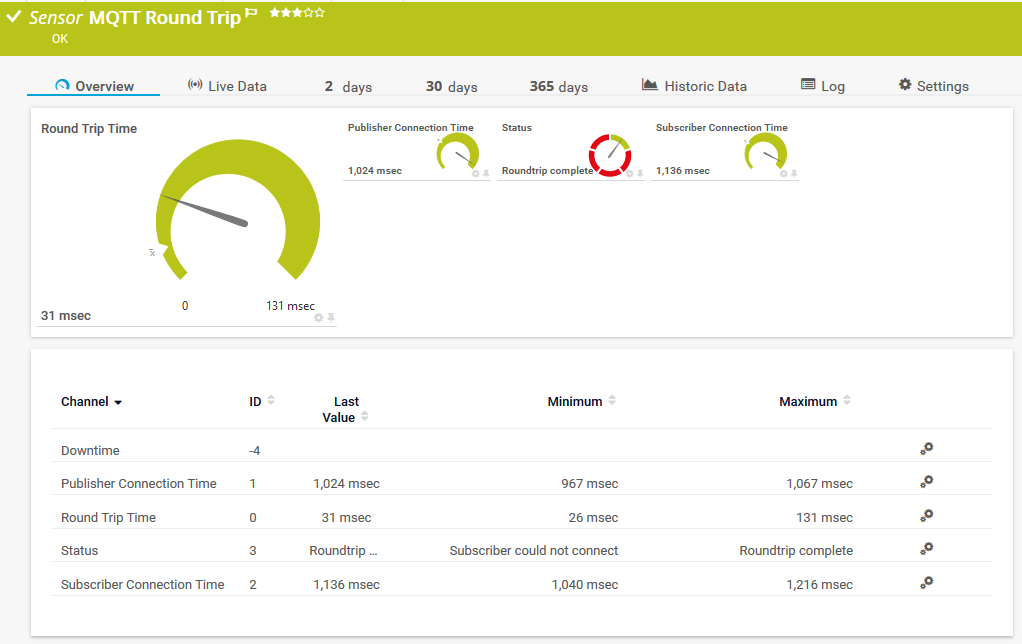
The sensor shows the message round trip time, the round trip status, the publisher connection time, and the subscriber connection time in different sensor channels.
MQ…What Are You Talking About?
In case you haven't heard about MQTT yet (that's all right), I'll explain it to you in the next sentences.
MQTT (Message Queuing Telemetry Transport) is an ISO standard publish-subscribe-based messaging protocol. It works on top of the TCP/IP protocol. It is designed for connections with remote locations where a "small code footprint" is required or the network bandwidth is limited. The publish-subscribe messaging pattern requires a message broker.
An MQTT system consists of clients communicating with a server, often called a "broker". A client may be either a publisher of information or a subscriber. Each client can connect to the broker.
Wikipedia provides a basic overview of what MQTT actually is and what you can do with it. In the future you will also find articles about MQTT in our blog.
More good news: The MQTT Roundtrip Sensor is just the beginning, and we are already working on further modules to make your life in the universe of IoT as easy as possible!
Two New Channels for the Windows IIS Application Sensor
The Windows IIS Application sensor now provides channels for status and uptime of a web service. This allows you to monitor statistics and availability of your hosted web services even closer. And, if the service is stopped, the sensor will now show an appropriate error message. Here's how it looks in the sensor:
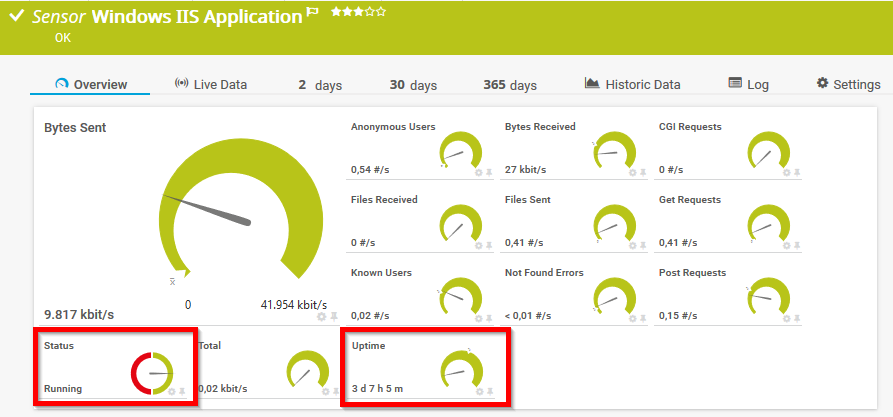
More Usability Improvements for Notifications
Notifications are one of the most important tools in PRTG. That's why we are constantly implementing improvements here. With this version, there are further usability improvements in the Notification Templates and Notification Triggers.
On the Notification Templates tab, you can now directly test an existing template, pause or resume it, and open a list of objects that use the template. So, no need to first open the multi-edit menu for quick action anymore.
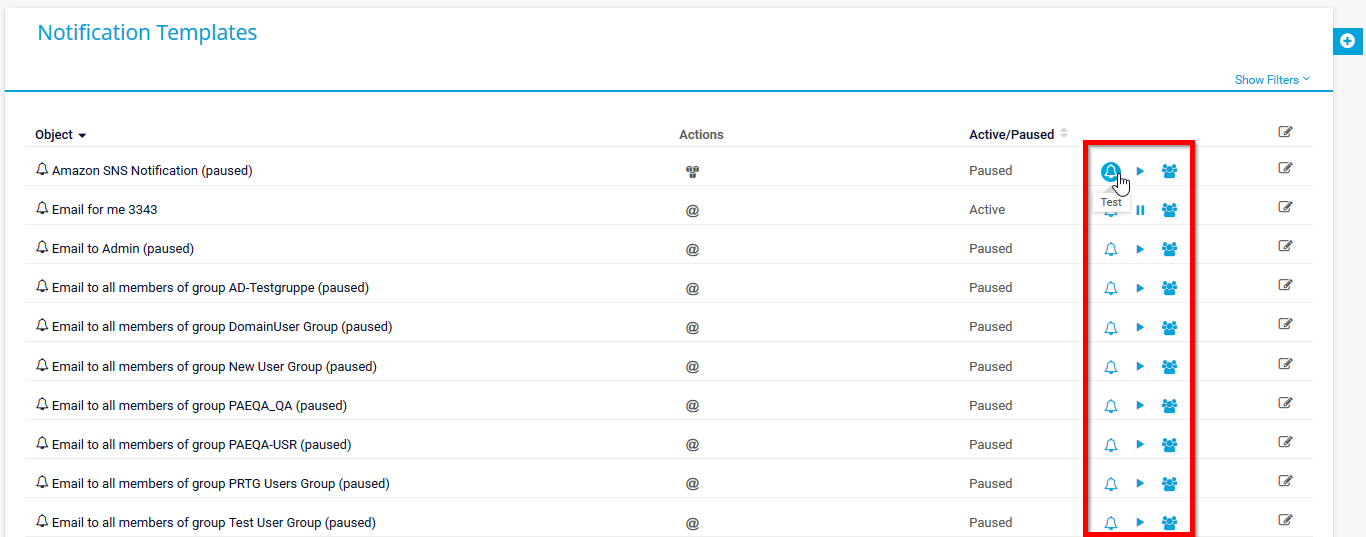
Notification templates that you select for a notification trigger now show the actions they perform with an icon in the drop-down in front of the template name. You can immediately see what type of notification you will get if something in your network goes wrong. Small adjustments to simplify your daily work with PRTG.
Some More Improvements and Fixes
Perhaps you already noticed that the installation file of PRTG is several megabytes larger since this version. This is due to the integration of a new rendering engine. PRTG now uses Chromium instead of the deprecated PhantomJS to be able to generate PDF reports in a more reliable way. Screenshots that you generate for the support bundle also use Chromium now.
Those of you who use a cluster installation of PRTG also benefit from the new release. Besides slightly improving the cluster performance, we also changed the handling of the remote probes. As of now we use a thread pool instead of two dedicated threads for each probe. You will especially notice the improvement if you have many remote probes connected.
We've also fixed some bugs on sensors, the server, and the web interface. See the PRTG release notes page for details and all other changes in the current version.
 Published by
Published by 